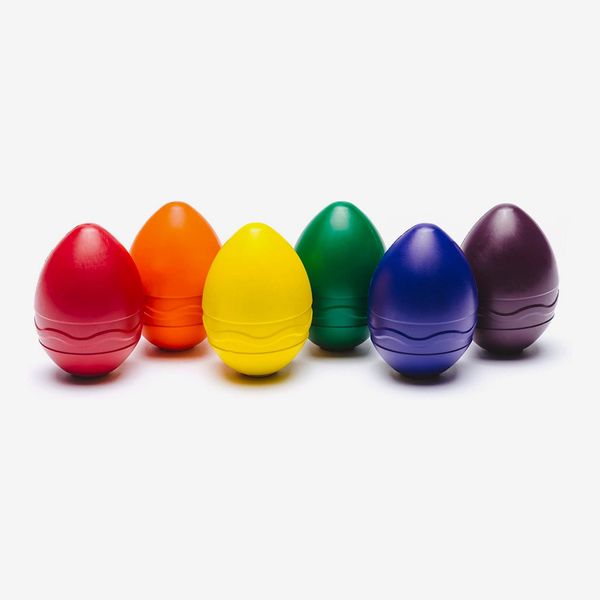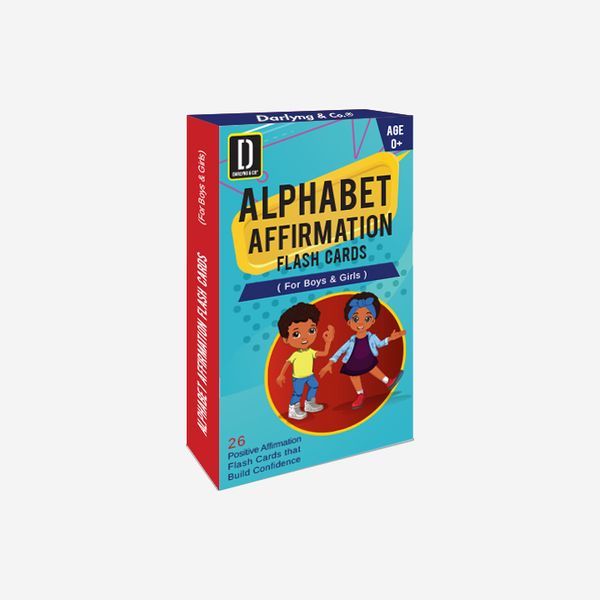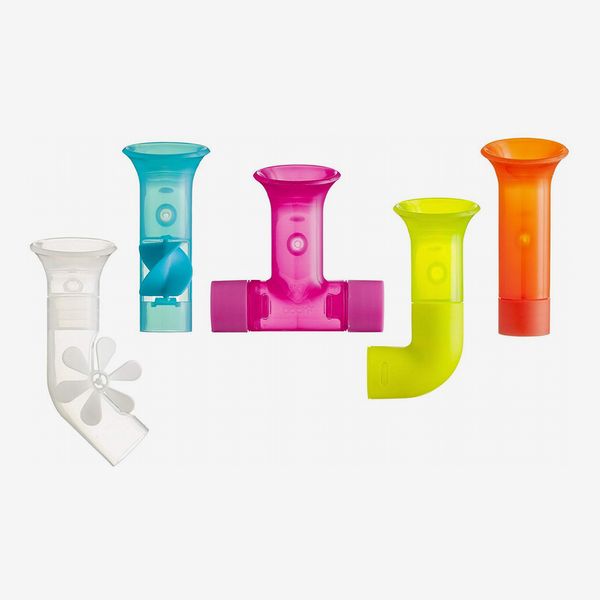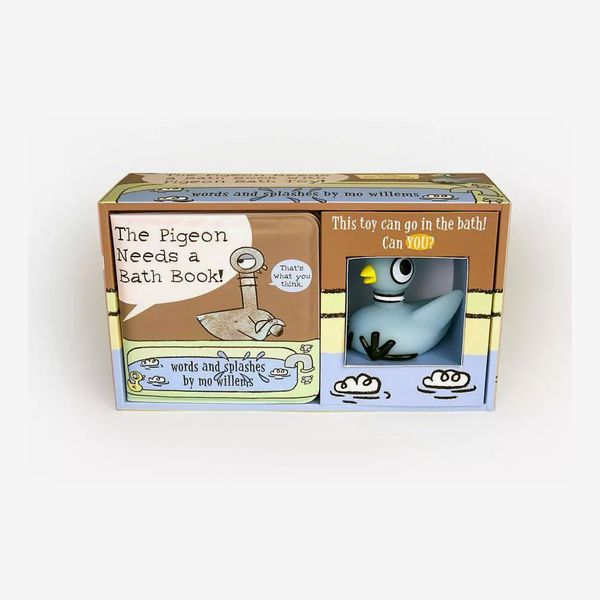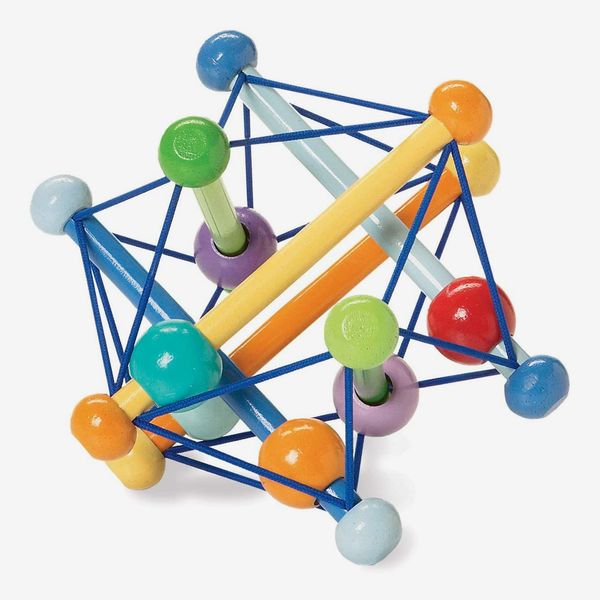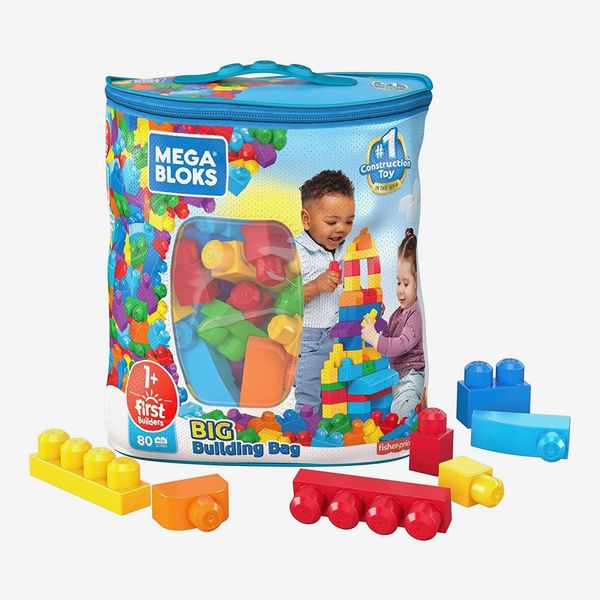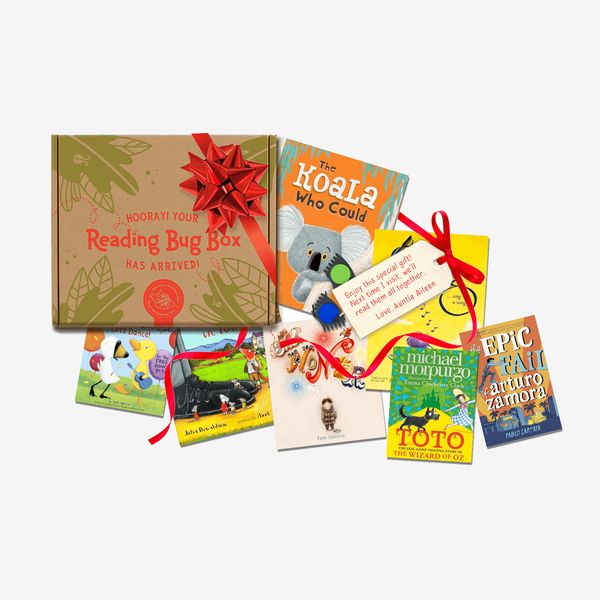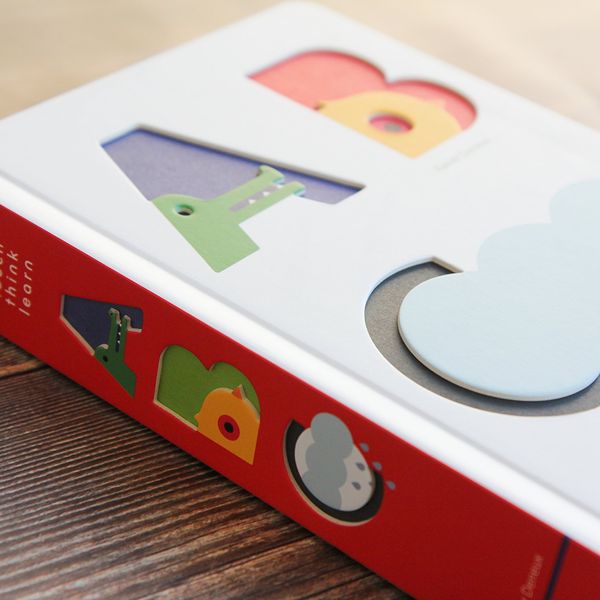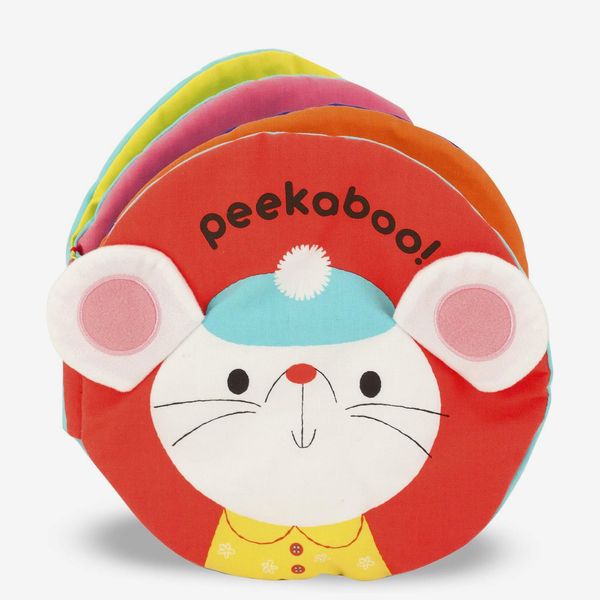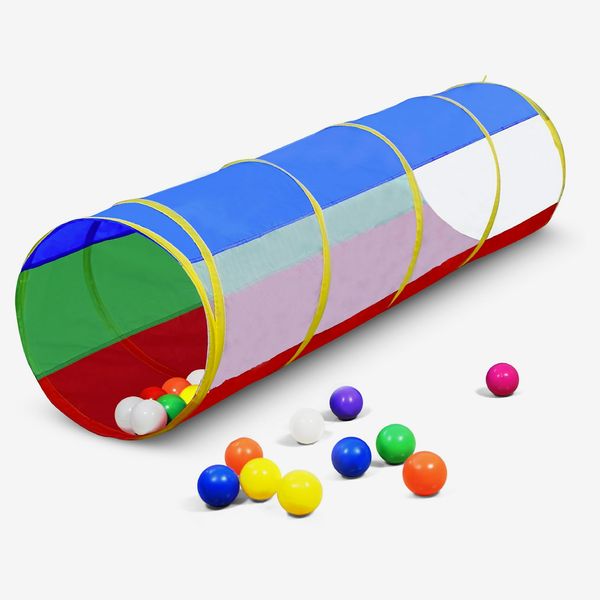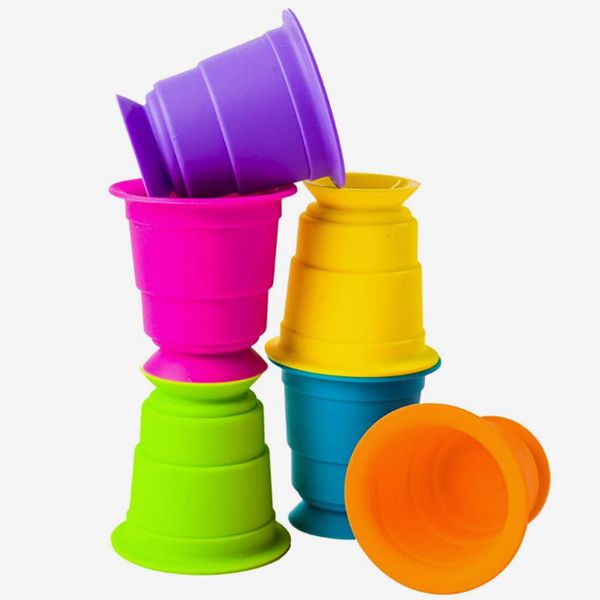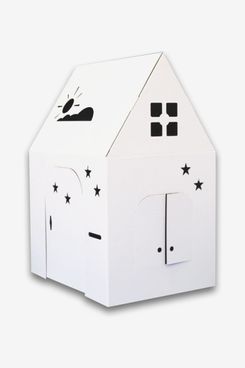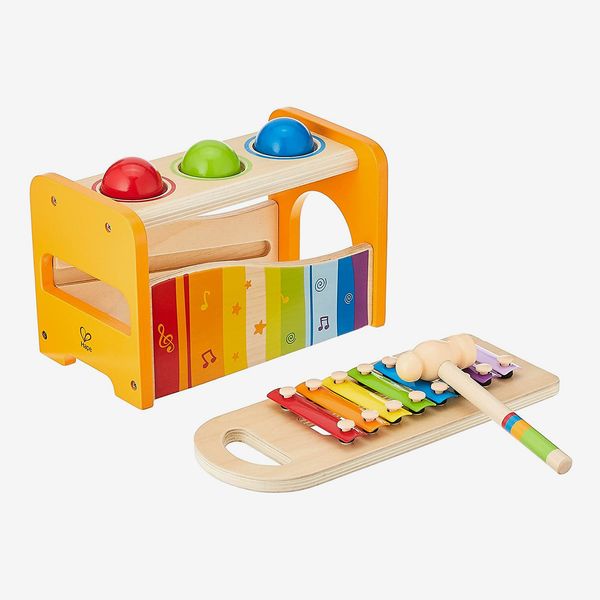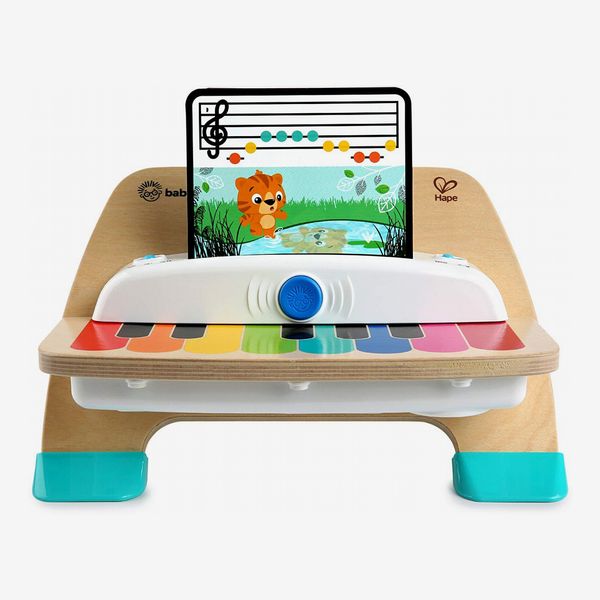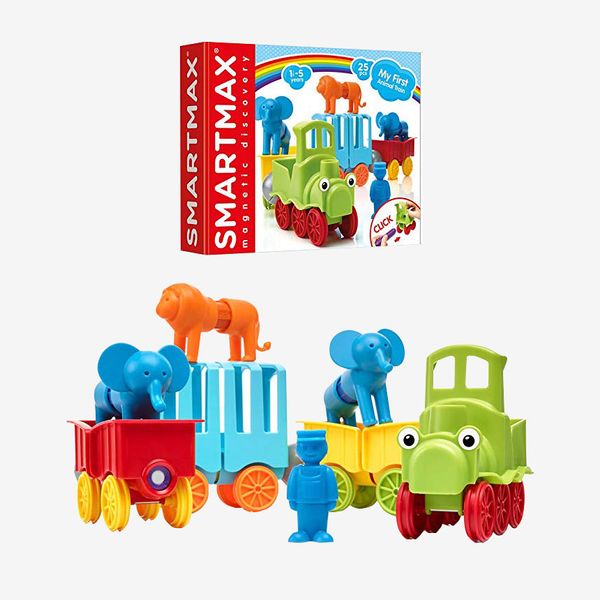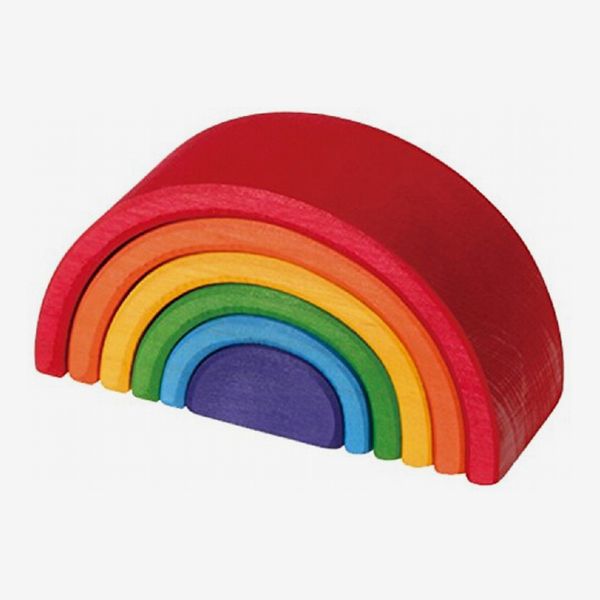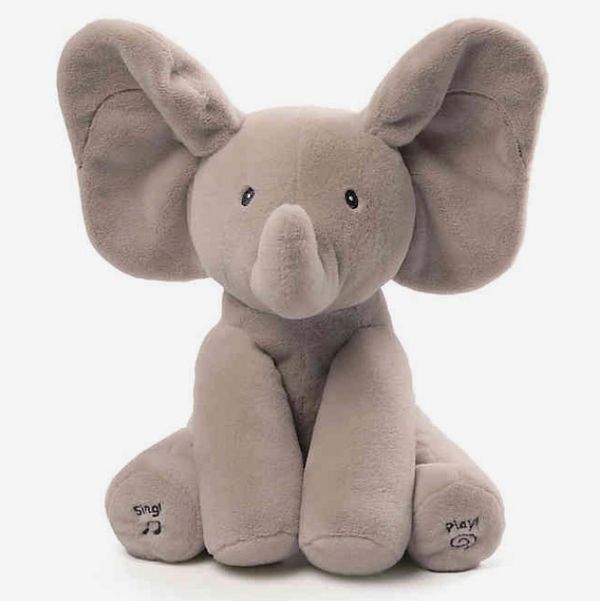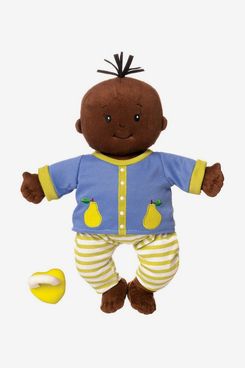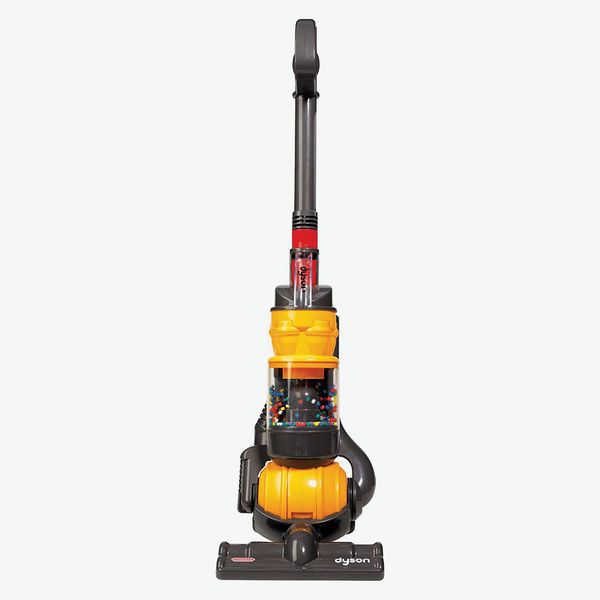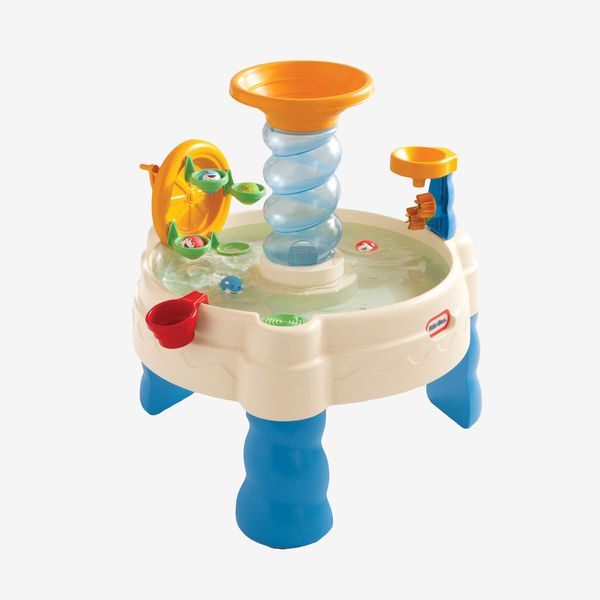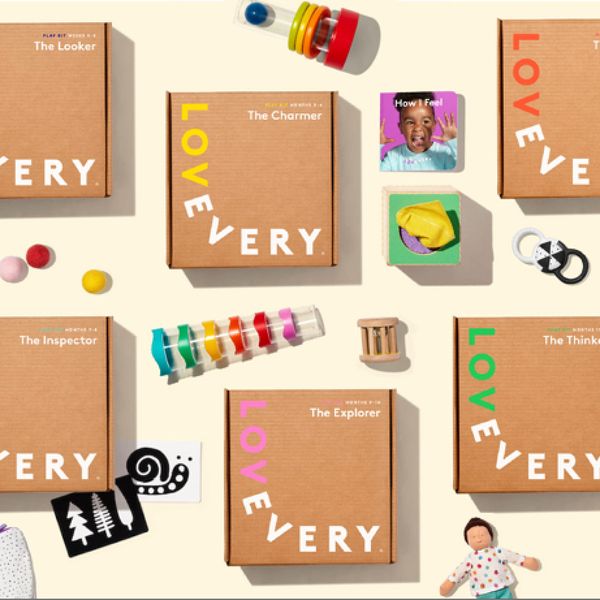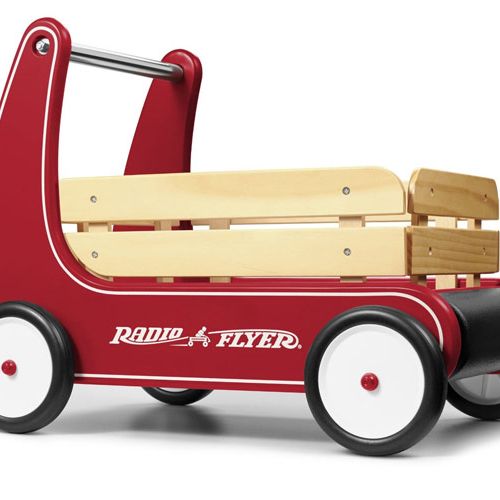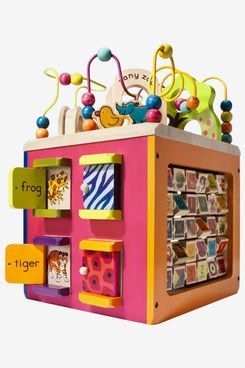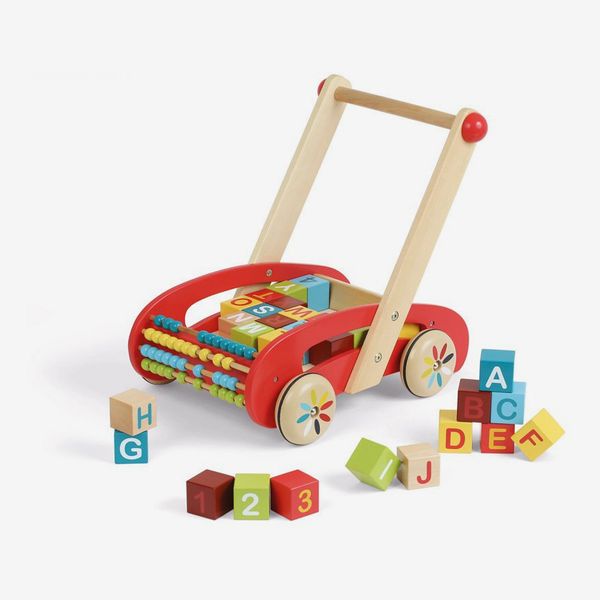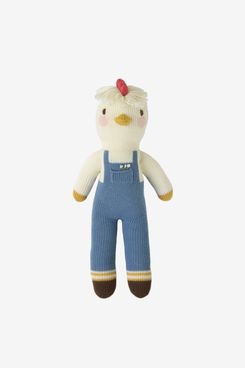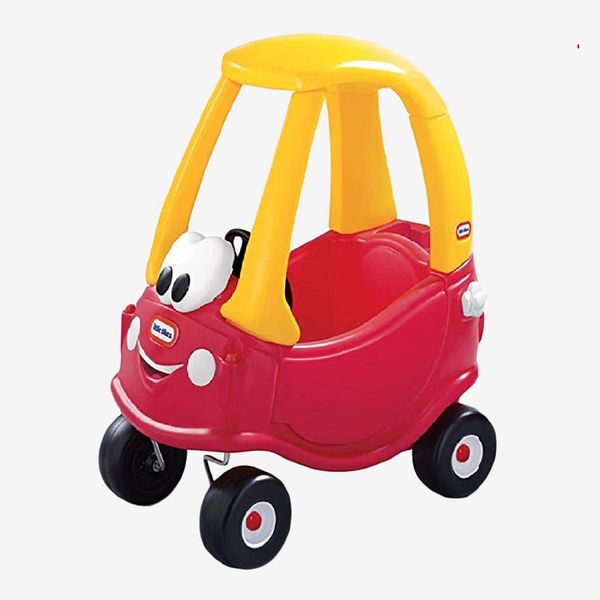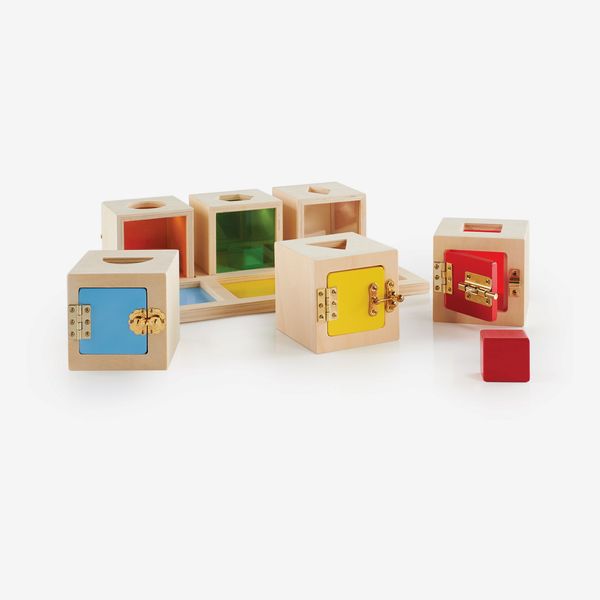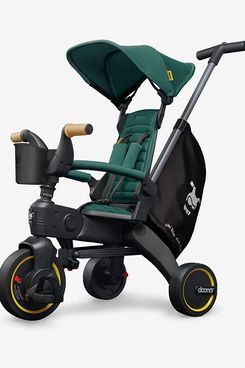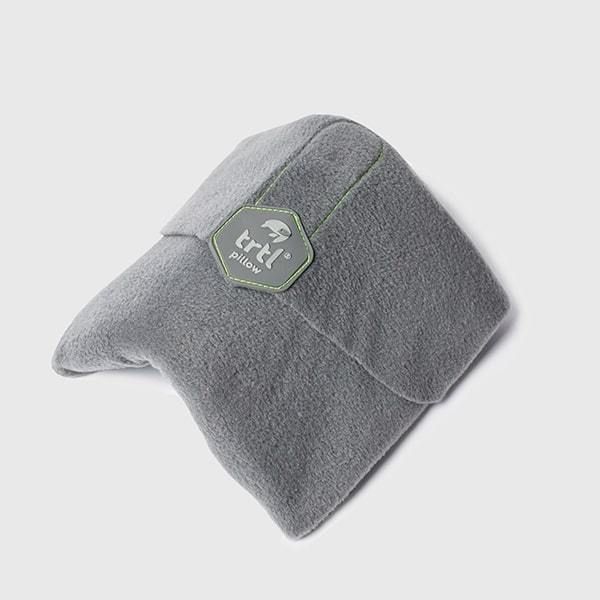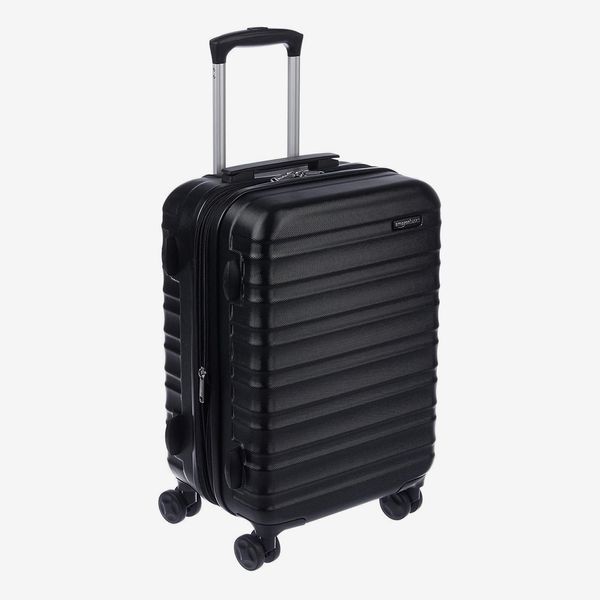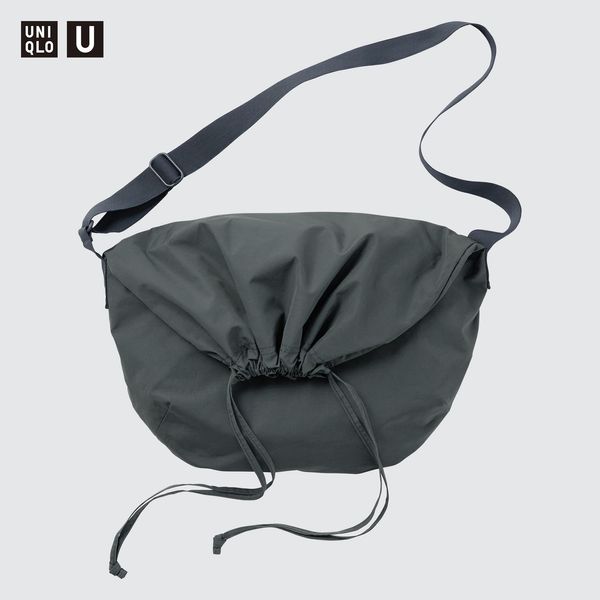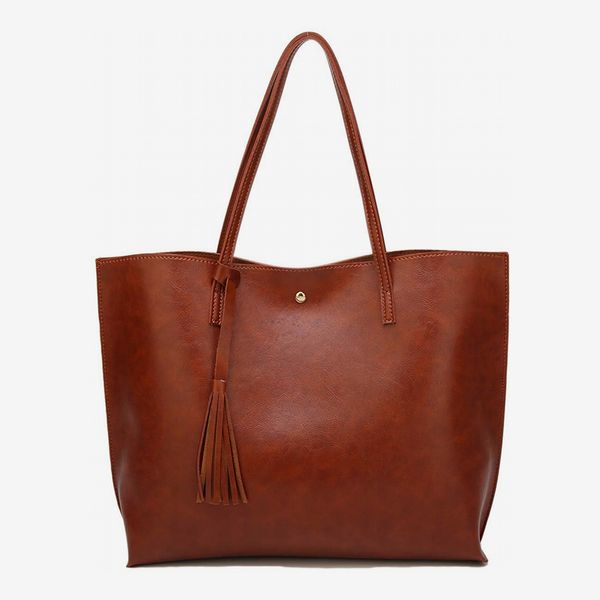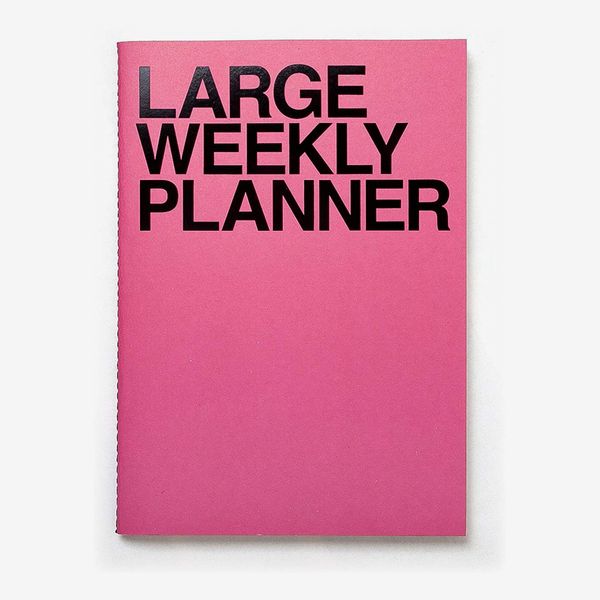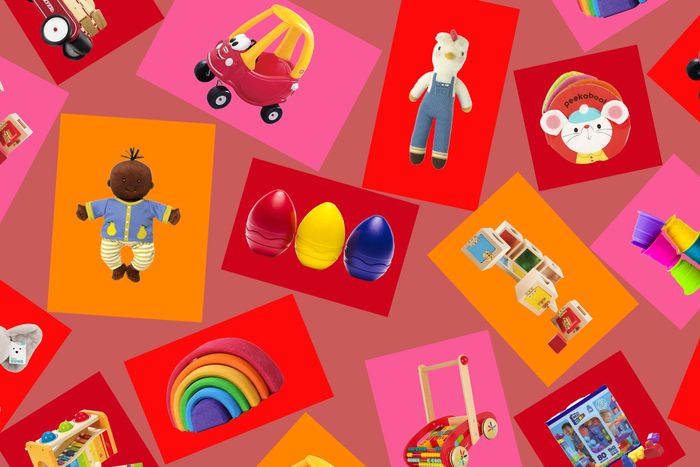
Jump to section
The key to delighting 1-year-olds is in finding toys that will stimulate and surprise their growing minds. “Babies’ brains develop so quickly — something like a million neural connections per second,” says Sarah MacLaughlin, a child-development expert and the author of What Not to Say: Tools for Talking With Young Children. “To keep them interested, you have to add sensory or mobility features to the mix.” Shannon Lockhart, a manager of early-childhood applied practices at HighScope, an early-childhood-education research foundation, agrees. “The more senses that you can appeal to within an experience, the more learning is going to happen,” she says. But that doesn’t mean you have to go out and buy toys with lots of flashing lights or animal sounds. Many open-ended toys like nesting blocks, play silks, and water tables do a wonderful job of stimulating all five senses — and they usually look a lot nicer, too.
We kept those guidelines in mind when compiling this gift guide for 1-year-olds, collecting recommendations from pros like MacLaughlin and Lockhart, arts educators, and plenty of parents who’ve been there, done that. The 31 expert-vetted gifts below will entertain curious toddlers and provide hours of fun while challenging their rapidly growing brains and helping them develop new skills.
To make it easy to shop within your budget, we’ve organized the list by price, so you can use the table of contents to jump ahead or read all the way through to get the full picture of what the kids are into these days. Whether you’re shopping for a birthday, the holidays, or any other day, it’s a list that keeps on giving. And if you’re shopping for older kids, we also have guides for 2-year-olds, 3-year-olds, 4-year-olds, 5-year-olds, 6-year-olds, 7-year-olds, 8-year-olds, 9-year-olds, 10-year-olds, 11-year-olds, and 12-year-olds — plus the meticulously curated Strategist Toy Store filled with all our greatest hits.
Under $25
Whether with fingerpaint, playdoh, or crayons, 1-year-olds love creating art—especially if they see big siblings drawing or painting. But most art supplies simply aren’t suitable for small, less-than-deft hands: Pencils have a dangerous point, paint makes a mess, and regular crayons snap into pieces. “Palm-grasp crayons are a great way to get young children to have interest in writing and drawing,” says Dr. Alexandra Figueras-Daniel, an assistant research professor at the National Institute for Early Education Research. “These are perfect for tiny hands to build fine-motor skills.” They’re almost impossible to break and will go a long way in encouraging artistic expression — and they’re washable. Even if it just looks like messy scribbling, this kind of exploration is key to laying the foundation for getting them to eventually write letters and numbers, according to Lockhart. “If we want children to eventually write their names, they have to have lots of experiences with different writing materials,” she says.
According to Strategist writer Lauren Ro, babies (her 1-year-old included) love these miniature board books with baby animal finger puppets attached. She loves the Narwhal story most, but there are also books in the series that feature a baby sloth, llama, unicorn, tiger, and so many more.
It’s never too early to start affirming your kids, which is exactly what these ABC flashcards are for. “We’re very intentional about showing our daughter a diversity of images; it matters early, the messages you receive,” says leadership speaker Jovian Zayne. You’ll see a Black girl on one side of a card and a Black boy on the other; A is for amazing, and the little girl is saying something like, ‘I am amazing and can do great things in my community.’” Zayne credits affirmations like these that she heard growing up as being critical for her growth and abilities to “operate with conviction, clarity, and joy, and build a sense of resilience.” Beyond being inspirational, the flashcards are also a fun way to learn the letters of the alphabet.
Figueras-Daniel loves this bath toy, “as it allows children to arrange and fill the tubes with water and observe the way to make the spinners go,” she says. This kind of observation teaches kids cause and effect, which helps develop cognitive skills.
For even more fun in the tub, Figueras-Daniel says you could get your 1-year-old this toy that comes with a book by beloved children’s author Mo Willems. The book is actually waterproof and can be read in the tub, making it a great way to encourage a reluctant child — like the pigeon protagonist itself — to take a bath. “Somehow, the simplicity of Willems’s books make them engaging and fun for little kids,” says Figueras-Daniel, who adds that the included toy pigeon makes the gift that much more entertaining — especially for 1-year-olds, who will love playing with it as they hear the story being read aloud to them.
“We’re big on musical instruments,” says Strategist senior editor Simone Kitchens, whose daughter will turn one in a few months. She recommends any kind of small drum or tambourine to help children work on their rhythm. “Something that we learned in her music class — and that research backs up — is that playing with these things can have a positive correlation with a whole slew of things, like reading, vocabulary, math, music, and physical coordination,” Kitchens says.
Engaging sensory toys make great stroller accessories because they can soothe a bored baby when you’re stuck in line or on the subway. “I’m sure the temptation for a lot of parents is to hand them something like an iPhone that makes a lot of noise. But the American Academy of Pediatrics doesn’t recommend consuming electronic stimuli in that way for children under 2 years old,” MacLaughlin explains. This squishy bead toy will hold their attention and stimulate their motor-skill development. “It’s like a more sophisticated rattle. It rattles when you shake it, but it also has beads that move around the bars, and it has a sensory aspect to it,” MacLaughlin says. And by the way, she recommends attaching any stroller toys to the stroller, lest they get chucked into the street by a gravity-curious kid.
Just as colorful, these oversize, interlocking Mega Bloks “are amazing,” according to mother of two Shirley Kim, who works as a clinical dietitian. “My kids played with them from age 1 to now — they’re 8 and 4 and a half.” The blocks’ bigger size makes them easy for small hands to grab and more appropriate for this age than, say, Lego Duplos (which happen to make an ideal gift for 2-year-olds). This set includes 80 pieces in all shapes and sizes that come packaged in a convenient storage bag.
According to speech-language pathologist Ellice Kim Lacerda, you can never go wrong with the gift of books, especially if they come in a curated box. “One of our favorite gifts we have received and given is a children’s book subscription box,” she says. Lacerda’s favorite book subscription comes from her local Bay Area bookstore, the Reading Bug — which happens to ship nationwide. “It was fun receiving books we had never read or even heard of,” she says, adding that many of the titles her family received became fast favorites. You can either choose a curated box with preselected titles or opt for a personalized one based on age, gender, interests, and reading level. As far as curated boxes go, the store has lots of options, but the “Baby” box of board books for 0- to 30-month-olds or the “Read to Me” box of developmental read-aloud titles would both make excellent choices for 1-year-olds.
Or you can gift your own favorites. Tze Chun, founder of Uprise Art and mom of two, loves the TouchThinkLearn series by Xavier Deneux. “These books are so beautifully constructed. Each page is super-thick and has embossed areas so that babies can feel the surface of each one,” she says. Her favorites include ABC (shown here), 123, and Colors. “The pages really hold up, even after years of playtime and bedtime.”
And for when you aren’t able to read aloud, educator and homeschool mom Britt Hawthorne recommends giving your child an aptly named “quiet book” to encourage concentration as they explore the soft pages. Though keeping a 1-year-old’s attention for more than a few minutes isn’t easy, “quiet books are like gold for toddlers,” Hawthorne says. Typically made of felt or quilted materials, every page of a quiet book has something for little hands to manipulate — including velcro, zippers, buttons, or crinkly fabric — which helps kids practice fine-motor skills. This peekaboo activity book from Melissa & Doug lets toddlers cover and reveal the face of a new animal from behind long ears, a big basket, and a set of fluffy bangs on each soft page.
Crawl tunnels are a thrill for this age group and get big giggles, to be sure, but they also help young toddlers with spatial awareness and a better understanding of object permanence. Older kids and adults know that the person whose face leans into and out of the tunnel is always nearby, but for a 1-year-old, these types of lean-in, lean-out peekaboo games genuinely help them learn about the way the world works. The pop-and-play tunnel offers six feet of play space, and to expand the fun, you can opt for a two-pack.
Kids this age love to stack things, and these bright, squishy cups by Fat Brain Toys, with suctions both at the bottom and around the brim, can be towered or paired up in all kinds of formations. Or they can “stick right to your fridge,” says Ashley Tyrner, a single mom and the founder and CEO of Farmbox Direct, the subscription-based organic-produce service (she also leads her now-9-year-old daughter’s healthy-meal-kit company, Harlow’s Harvest). “They entertain your child while you’re cooking dinner.” In reviews, it’s been noted that the Kupz also work as a teething toy or even as a juice cup, in a pinch — they’re BPA free and made of 100 percent food-safe silicone.
Under $50
Children love to play house, so why not get them their very own place? Eater restaurant editor Hillary Dixler Canavan recommends this low-commitment house made out of cardboard, and her 1.5-year-old daughter loves it, too, especially “sitting in there with books or opening and closing the window.” Inexpensive, customizable — it’s a blank canvas, after all — and perhaps best of all, sustainable, it’s a great option for city folks who don’t have access to a backyard. “We set this up in our living room, and while it’s not inconspicuous, it’s also pretty small,” she says (it’s about four feet tall). “And if we ever decide we just can’t take it anymore, we’ll recycle it.” Still, she cautions, “It’s a commitment to have it in our living area, but it’s worth it for her to have a little imaginative play space.”
For kids who love music — and hitting things — this two-in-one toy ought to be, well, a hit. The multifunctional bench features a pullout xylophone and three wooden balls that can be banged on with a mallet. Once they’re pushed through, the balls either land on the xylophone to create a pleasing melody or simply roll down the ramp to be fetched. Remove the xylophone from the bench and you have a stand-alone musical instrument. Publicist and mother of two Sonya Li Casino says her now-3-year-old son loved it so much, “I ended up purchasing it for a few other 1-year-olds.”
For a more traditional musical instrument, consider this “magic touch” piano from Baby Einstein. Simply tap the colored keys to play classic tunes or create your own melodies — a great way for babies and parents to play together. As Dr. Sarah Roseberry Lytle, director of outreach and education at the Institute for Learning and Brain Sciences, explains, “Young kids love making music and noises and exploring things like, ‘Can I make it softer? Can I make it louder? What happens when I hit it harder? Does that make it louder?’ That’s a really interesting learning process.”
“This set is a winning combination of magnetic train cars and mix-and-match animals that kids can build, disassemble, and make again,” says Holly Magelof, toy buyer for the Dolphin Bookshop and a 20-plus-year veteran of the toy-buying industry. “There’s even a conductor included. It’s always a favorite of our pint-size customers.” And it’s compatible with other SmartMax sets to keep the building going (and easily set you up for future gifts).
These curved wooden rainbow blocks can often be found in Montessori and Waldorf classrooms alongside more basic rectangular versions. Each arc in the set can be stacked, balanced, and combined with the others to create imaginary city scenes with bridges and buildings or to simply allow for experimenting with texture and gravity. “Stacking is fun, but even if they’re not coordinated enough to stack their toys, they would love to watch you stack and then be able to knock it down,” says MacLaughlin.
Once they’re 1 or older, all little children need a stuffed friend to cuddle with in the crib at night (and tote around tucked under an arm all day). “Let me apologize in advance for recommending this singing elephant,” says Fiorella Valdesolo, a writer, creative consultant, and mom to an almost-2-year-old. Tap one of its feet and the cuddly toy plays peekaboo; tap the other and it sings “Do Your Ears Hang Low” in what Valdesolo describes as “a creepy childish voice.” And yet “your baby will find it endlessly entertaining,” playing it “over and over and over again,” Valdesolo notes — so much so that “it will drive you batshit.” Which is the hallmark of only the best pieces of brain candy.
For a more humanlike plush toy, Figueras-Daniel says that a doll with removable clothes, like this one, provides “opportunities for children to use fine-motor skills in fun ways.” She says such a doll will also help with symbolic thinking and sociodramatic play — or imaginative play with a social element — which begins at age 1. “Items that facilitate pretend play, like dress-up clothes, play phones, dolls, food, and dishes, allow children to start to carry out these play routines on their own and with others,” she says, adding that this kind of play “ties in with language development as they engage with other adults and children.” Figueras-Daniel loves that Baby Stella comes in various styles, including what the brand calls “peach” and “brown,” saying it’s important “to get dolls that reflect the children who are playing with them, as children need toys that reflect who they are.”
Children love emulating their caregivers: That’s why play kitchens, play lawnmowers, and play cars are so popular. When Strategist contributor Steven John’s daughter was 1, she loved playing with her toy Dyson, just like her big brother before her. “If my wife or I grabbed our actual Dyson from the closet, she ran full-speed across the house to grab her own little vacuum — which does actually create light suction — and followed us around laughing as she ‘helped,’” he says. Not only does it look remarkably like the real thing, down to its shade of Dyson Yellow, it has a motion-activated suction that can pick up little bits of paper, adding a dose of realism to playing make-believe.
This water table kept John’s kids playing for up to an hour at a time and served as the focal point of countless summer days. When filled with water, it’s stable enough to support toddlers who are still shaky on their feet, while all the many accessories (including those you add, from pitchers to spoons to plastic and rubber toys) engage older toddlers who are ready for more involved play. Best of all, it’s large enough — and has enough activities — for many kids to play with the water table simultaneously.
Under $100
Lovevery play kits are carefully curated by a team of developmental and educational experts. The toys included are age and stage appropriate, designed to foster the growth of spatial skills, reasoning, and of course to be plenty of fun — think simple stacking toys, colorful pouches for hiding away wooden treasures, and books with images of other children. Both John and Strategist writer Lauren Ro swore by these kits for their kids when they were as young as 1. Ro says, “I was impressed with the quality, design, and thoughtfulness of each box, which came with in-depth instructions and suggestions for use as well as a breakdown of what you can expect your baby to do in that two-month span.” The boxes are especially useful if you want guidance on how best to support your little one’s development so if “you’re looking for something educational that’s not didactic but still somewhat structured, then this is for you,” Ro adds. Lovevery play kits have grown in popularity with parents across the country, including a few notable folks and while you always have to take celebrities Instagramming about products with a grain of salt, we’re inclined to believe the caption in actress, singer-songwriter, and mom Jordin Sparks’s Instagram story. Sparks raved about how the kits have been “incredible” for her son’s “mental, physical, and emotional development.”
“This wagon is great for the stage when your baby begins to ‘cruise’ or walk around the room by holding onto things,” says Zahra Kassam, founder of the at-home Montessori program Monti Kids. “It’s a Montessori-teacher favorite because it allows babies the opportunity to practice their walking skills while building their independence.” A tip she shared: “Weigh it down with heavy books or free weights to slow it down at first.” And on the celebrity front: A red Radio Flyer wagon appeared on the back terrace of the home of actor Aaron Paul in this encounter with New York (his daughter was 19 months old at the time).
“This big wooden cube lived in the playroom in my house for years” and delighted “all nine of my grandchildren,” says Westchester grandmother Donna D’Andraia. “It’s such a beautifully made toy that it can be handed down through generations. I passed it on to my niece’s son when he was a year old: He loved moving the beads along the maze and opening the little wooden doors to be surprised with the different faces of animals.” Though a heavy, bulky investment — it weighs almost 15 pounds — “it will last forever,” D’Andraia adds. Ro, who received it as a gift for her now 3-year-old when he was a baby, agrees it’s a toy that grows with children from their first year.
If you’re looking for something that combines the charm of the B. Zany Zoo activity cube and the versatility of the Radio Flyer push wagon, consider this buggy that critic and writer Sadie Stein — and her 2.5-year-old son — loves. “The single best gift Hal ever received was this wooden walker full of blocks,” she says. Made by French company Janod, the wooden push toy includes 30 alphabet and number blocks as well as sliding beads. Stein, who appreciates gifts that are practical, says that the buggy is “also good for holding and storing other toys.”
Artist Anna Bak-Kvapil loves playing with these silk scarves from Sarah’s Silks with her almost-1-year-old daughter. “The pure-silk nature of the scarves make them really soft and spectral,” she says. “Something about the floaty nature of Sarah’s Silks really captivated her. We have other play scarves, but they’re not as floaty.” As for how to play with them: “Either I put it over my head and ‘hide’ from her or I drape it over her head and she pulls it off herself (usually).” Strategist senior editor Jen Trolio notes that, while the silks are a great 1-year-old toy, they are also a lasting “grow-with-you” toy and very useful in pretend play. Her own daughter wore a blue one for a couple of months straight as an Elsa cape when she was 3 years old.
“Blabla dolls are my go-to gifts for all the little people in my life,” says postpartum doula Julie Arvan, who invented the Nesting Days baby carrier. She adds that she starts giving them at age 1, telling us, “The dolls are more than toys. They’re whimsical companions for young children.” Arvan explains that transitional objects like these dolls “are key for gradually learning to separate from mother and explore the world.” The dolls are handmade in Peru from 100 percent cotton, and for each one sold, the company promises to plant one tree in partnership with the nonprofit organization One Tree Planted.
This little car has been delighting toddlers for more than 40 years now, and it’s surely got many decades of popularity left. By the time they are about 18 months old, most toddlers will be able to “drive” the classic coupe themselves — meaning use their feet to scoot it around. The smooth plastic exterior won’t mark or scratch most surfaces, so it’s suitable for use indoors; the plastic tires can handle brick and concrete, too.
$100 and up
“My oldest would sit forever and try to work on these little locks when he was a toddler,” says Hawthorne about her now-teenage son. This lock box incorporates shape sorting and color matching in addition to different styles of locks. Though the age recommendation for this toy begins at 2 years old, many 1-year-olds will enjoy playing with it, especially after watching you model how it works. The buckling and unbuckling also allow them to exercise their developing fine-motor skills.
While this is definitely an investment, mom Jennifer Beall Saxton, the founder and CEO of Tot Squad, calls the Doona the “most versatile tricycle ever” and promises that it’s something that can grow with a 1-year-old, with the recommended age range being 10 months to 3 years. According to her, it’s “the only ride-on toy that allows you to adjust each element, from who steers to who pedals or pushes, so that parents can relinquish some control at each stage of development.” The Doona Trike starts off as a stroller with a partially enclosed seat and a handle for pushing, both of which can eventually be removed to leave just a trike in its most advanced mode. Says Saxton, “We got it just after my daughter turned 1 and had to steer and push for her, but as we spent time exploring our neighborhood she got more proficient, and now we can let her loose.” If you’re worried about gifting something that looks cumbersome, know that the Doona Trike folds up for easy transport and storage.
The Strategist is designed to surface the most useful, expert recommendations for things to buy across the vast e-commerce landscape. Some of our latest conquests include the best acne treatments, rolling luggage, pillows for side sleepers, natural anxiety remedies, and bath towels. We update links when possible, but note that deals can expire and all prices are subject to change.
Every editorial product is independently selected. If you buy something through our links, New York may earn an affiliate commission.
